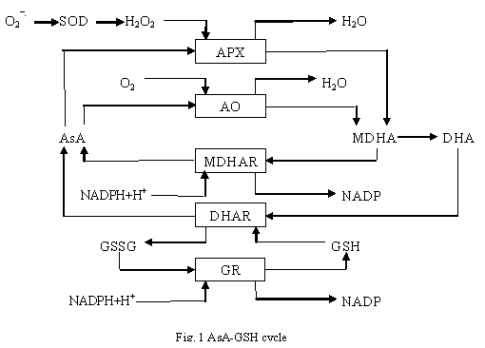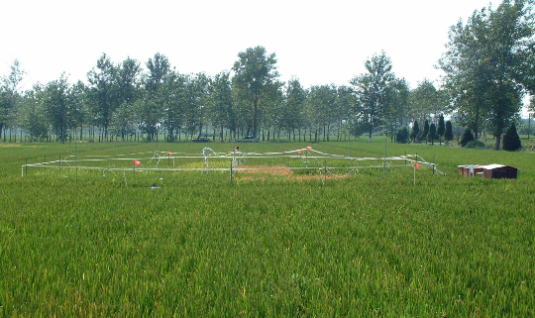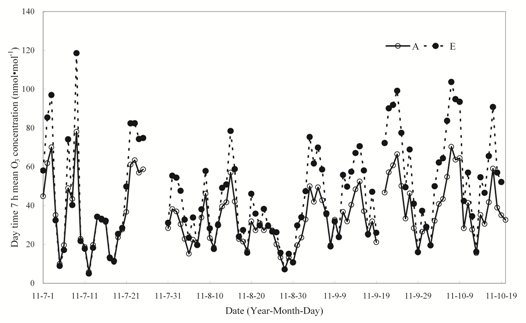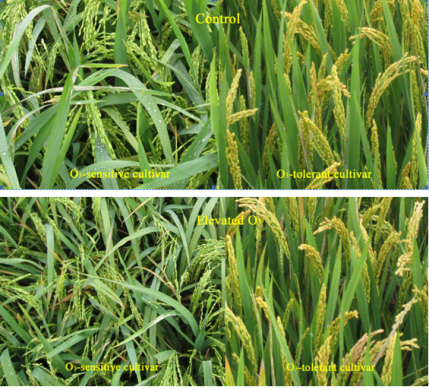Rising tropospheric ozone concentrations ([O3]) can lead to considerable damage to agricultural crops. The phytotoxicity of O3 comes from its high oxidative capacity through the induction of reactive oxygen species (ROS) in exposed plant tissue. The ascorbate-glutathione (AsA-GSH) cycle has an important function in eliminating H2O2, and the metabolism of the AsA-GSH cycle can be stimulated in plants by moderating stress conditions to scavenge ROS.
Rice (Oryza sativa L.) is one of the most important food crops in the world. An O3-free-air controlled enrichment (O3-FACE) platform was developed by the research group lead by Prof. Zhu Jianguo provides more natural field conditions than pots, and plants are continuously exposed to elevated O3 concentration [O3] that fluctuates in accordance with ambient [O3]. Previous O3-FACE studies have reported that O3 impacts the growth, yield, grain quality and photosynthetic characteristics of rice cultivars; these results have suggested that hybrid rice cultivars are relatively sensitive to O3 and exhibit a significant yield loss, whereasinbred cultivars do not. In the present study, two rice cultivars with different responses to O3 were studied to investigate the ROS metabolic system and AsA-GSH cycle using O3-FACE technology.
Our results suggested that ROS detoxification by the AsA-GSH cycle under long-term exposure to an O3-enriched atmosphere plays a more important role in an O3-tolerant rice cultivar than in an O3-sensitive rice cultivar and that a better understanding of antioxidant system mechanisms is essential to the assessment of different rice cultivars’ responses to future tropospheric [O3].
|

|
|

|
|
Fig. 2 O3-FACE ring
|

|
|
Fig. 3Seasonal changes in daily 7 h (9:00–16:00 Chinese Standard Time) mean [O3] for ambient [O3] (A) and elevated [O3] (E) (1.5×ambient[O3]) |
|

|
|
Fig. 4Visibleinjuries inO3-sensitiveandO3-tolerant rice cultivarsunder controlandelevated [O3] treatment on grain-filling period
| | |
